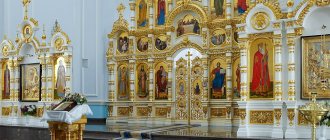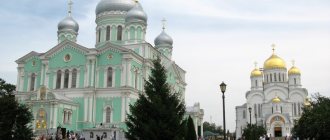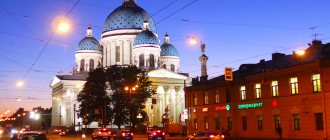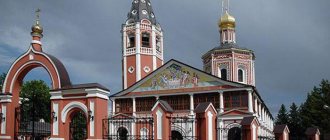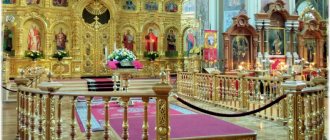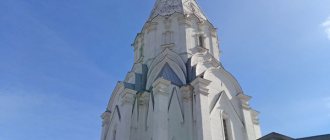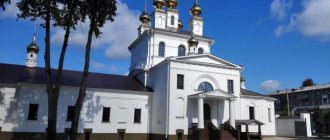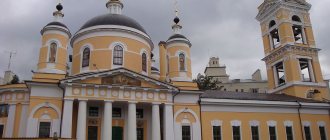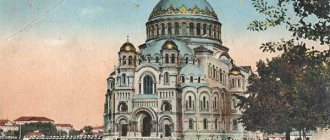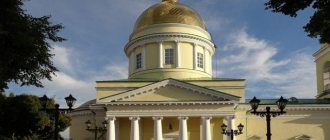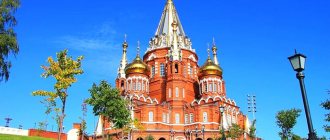Usually, when I go to see another ancient Russian fortress, I associate it, first of all, with walls and towers. I most often perceive internal buildings as separate objects, especially when it comes to churches. However, there are exceptions to all rules, and one of them was the Pskov Holy Trinity Cathedral. Pskov is generally unique in this sense, since its churches are more than just places of worship.
In addition to the fact that they supported the morale of the Pskov residents during sieges, some of them were also entrusted with administrative functions - in particular, the Trinity Cathedral. Until the 16th century, Pskov was a trading republic, and on Vechevaya Square, right in front of the temple, princes were elected and other decisions important for the townspeople were made.
Religion of medieval Pskov
Despite the fact that in the Middle Ages religious and cultural differences were much more acute than in our time, when it came to trade, they often faded into the background. That is why medieval ports and simple trading cities have always been centers of religious tolerance and cultural exchange between peoples.
In this sense, Pskov surprised me a lot: being for the rest of Rus', in fact, a window to Europe, this city until the beginning of the 16th century remained independent, isolated, and the Pskovites did not really favor strangers. Suffice it to say that all transactions with foreign merchants were carried out outside the Pskov fortress, the walls of which were prohibited for overseas guests to penetrate under pain of death. Of course, there was no talk of any Catholic or Lutheran churches on the territory of old Pskov. On the contrary, in terms of the concentration of Orthodox churches per square kilometer, the city is perhaps not inferior to Suzdal.
Externally, the main cathedral of Pskov seemed to me more elegant than other local churches, characterized by rough execution. The thing is that, in comparison with other churches in Pskov, this church in its current form was built only at the end of the 17th century.
History of Trinity Cathedral
According to legend, the first church on the site of the current temple was ordered to be founded in the 10th century by Princess Olga, who herself was from these places. This fact is noteworthy, if only because at that time Christianity was not yet an official religion in Rus', so we can say with all confidence that we are talking about one of the first, if not the very first, Russian Christian church.
The first temple was wooden, and three stone cathedrals, including the current one, stood on this site at different times. The first was built in the 12th century by order of Grand Duke Vsevolod-Gabriel, the future Pskov saint, whose relics still rest within the walls of the Trinity Cathedral. In 1363, the church collapsed, and in its place a new stone church was erected, which stood for more than three centuries, but in 1609 it was seriously damaged by fire, and in 1682 it was decided to build the cathedral in the form in which we can see it now .
Construction was completed only in 1699, and at the end of the 18th century, open side galleries were added to strengthen the structure.
How to get to Trinity Cathedral
The temple is located on the territory of the Pskov Kremlin or, as it is also called, Krom. Once outside the fortress gates, it is difficult not to recognize the Trinity Cathedral, which is not only the main, but also the only church within the walls of the Kremlin.
To get to Pskovsky Krom on foot or by car, the Olginsky Bridge over the Velikaya River should serve as a landmark. Krom is located on the right bank of the river and, if you stand with your back to the water, it will be to the left of the bridge. The address of the Trinity Cathedral is Kremlin Street, 2/1.
Buses run from Pskov railway station to the Kremlin. In this case, you need to get to the Lenin Square stop; those that follow routes No. 1, 5, 8, 11, 14, 15 and 17 are suitable for you. The cost of one trip is 20 rubles. Read more about how to get to Krom here.
It is important to remember that the territory of the Kremlin itself is a pedestrian zone, and the entry of any vehicles there is not allowed.
Architectural ensemble, external decoration
Currently, the composition of the monument includes:
- quadrangle with three apses and one dome;
- aisles on both sides;
- porch and new bell tower.
The Temple on Gorka (Pskov) is lined and whitewashed.
Its dimensions:
- length 23.4 m;
- width 20.5 m;
- height 22 m.
The building stands on a high foundation hidden by a hill. The entrance to the basement (ground floor) is located under the wall of the northern gallery.
The compositional basis is a cubic volume with three apses and one dome. The walls of the cube are divided by pilasters, which correspond to the columns inside the church and are decorated with zakomaras, three on each side. The lunettes are filled with voice boxes (clay pots immured in the walls, improving the acoustic capabilities of the building).
The apses are decorated with a traditional three-row ornament - runners (triangular recesses) and curbs (rectangular recesses). The basis for the onion-shaped dome with a cross is a drum decorated with an ornament of runners and curbs.
It is cut through by 6 slot-like window openings, not oriented to the cardinal directions, which is not entirely customary (usually there were 4 or 8 windows in the drum).
The northern aisle of the church (square in plan) has one apse and one dome. The gallery connects it with the vestibule. The walls of the side temple are divided by pilasters, and in the center of the upper part of the central wall there is a small niche-case. The drum of the side church is cut through by 4 narrow windows. It is crowned with a smaller onion dome than the main one with a cross.
Another chapel is located on the south side. It is also connected to a vestibule, divided into 3 parts.
The bell tower has two tiers. The first tier is square; the second is hexagonal, with arched openings. The bell tower is topped with a drum with a dome and a cross. In the southwest corner there is a staircase leading to the upper bell tier.
Conditions for visiting Trinity Cathedral
Entrance to the territory and to the cathedral itself is free. We must, however, remember that this temple is active, which means that the appropriate dress code must be observed. You can only take photographs inside without flash.
In addition, near the entrance to the Kremlin there is a small excursion agency where you can book a tour without an appointment. I recommend doing this, especially considering that for a mini-group the cost of an hour-long walk around the Kremlin with a visit to the cathedral will be only 600 rubles.
The cathedral itself is open to the public every day from 08.00 to 20.00.
Services are held regularly:
- Liturgy - 09.00, Monday-Saturday,
- early liturgy - 07.30, Sunday,
- late liturgy - 09.30, Sunday,
- Evening service - 17.00, every day.
You can find out about services dedicated to church holidays and other significant events on the official website of the Pskov Diocesan Administration.
Social work, everyday life
Parish life is active and rich. The temple has its own icon-painting workshop, an artistic forging workshop, a Sunday school, a pilgrimage center, and a help service.
Sunday School
Since 2005, a Sunday school has been opened at the temple, which is attended by children aged 3 to 14 years.
Help Desk
For several years now, the “White Flower” help service has been operating at the temple.
Help service "White Flower". helps the homeless
This organization provides assistance to those who need it.
- Volunteers help large and single-parent families, the homeless, and fire victims.
- They organize free dinners for those in need and deliver food to social hotel guests.
- The service provides assistance to residents of different areas of the region. Clothes, shoes, and children's toys are sent to them every week.
- The center's employees provide their clients with some free services: educational, legal, and hairdressing services.
Church shop
The church shop, located in the right aisle, is open daily from 8 a.m. to 7 p.m. There is a large selection of Christian literature (Holy Scripture, prayer books, works of art written by Orthodox authors, akathists, and much more). An entire shelf is dedicated to children's literature, the range of which is constantly updated.
In the shop you can pick up souvenirs that correspond to a specific church date or simply like them: Orthodox diaries, Easter eggs, boxes, dishes with images of the church, Christmas tree decorations. In addition, here you can purchase DVDs and CDs with films for children, musical compositions, church chants, and lectures on religious topics.
The store sells:
- icons, candles;
- lamps;
- lamp and essential oils;
- products made of gold, silver;
- everything necessary for wedding and baptism ceremonies.
Here you can also buy or order fresh church baked goods.
Icons of the Trinity Cathedral in Pskov
When I climbed the steep stairs and got inside the temple, I immediately noticed that the impressive iconostasis was installed against the backdrop of bare walls. The wall frescoes were lost during the already mentioned fire of the 17th century, but the icons in the cathedral fully compensate for their absence, being the hallmark of the temple. Suffice it to say that even if you type “Trinity Cathedral of Pskov” into a search engine, the iconostasis will appear, if not in the first, then in the second ten thematic images.
As for the icons themselves, I, as a non-religious person, was most impressed by the modern painting “The Cathedral of Pskov Saints,” which depicts all the canonized natives of the Pskov land, starting with Princess Olga.
I don’t really get the hang of such a large number of saints and the free spirit of the Pskov people, which in some places borders on cruelty.
In addition, at first I was quite surprised to see above one of the icons a triangle with an eye in the middle, which is often called Masonic. In fact, the Masons borrowed it precisely from iconography, and the eye is nothing more than the All-Seeing Eye of God. As for the triangle, this is precisely the symbol of the Trinity, so it is especially appropriate in the Trinity Cathedral.
Among the other icons, the most popular are the images of the Chir and Pskov-Pokrovskaya Mother of God, painted in the 16th century, the myrrh-streaming icon of St. Panteleimon (XVI-XVIII centuries) and others.
Current state
In the 21st century, services in the Holy Trinity Cathedral are held in four chapels:
- Trinity;
- Kazan;
- Alexander Nevsky;
- Serafimovsky.
The first three are located on the top tier.
Interior of the cathedral
The Church of Seraphim of Sarov, the iconostasis of which was painted by the famous modern icon painter Zinon in 1988, is located on the first floor. You can climb from the porch to the second tier via a wide staircase.
Relics of Trinity Cathedral
In addition to the rich iconostasis, the cathedral contains the relics of several Pskov saints. In particular, by searching “Trinity Cathedral of Pskov relics” you can easily find a photo of the richly decorated shrine of the above-mentioned Prince Vsevolod-Gabriel.
In addition to him, as well as the Lithuanian prince Dovmont, who took refuge in Pskov and took the name Timofey in baptism, there was also a place within the walls of the cathedral for saints of less noble origin. Thus, Abbot Joasaph, who founded the Snetogorsk Monastery near Pskov in the 13th century, rested in Trinity Cathedral. In 1299, he died during an attack on Pskov by the Livonian knights and has since been revered as a martyr. Another saint, the holy fool Nikola Salos, lived already in the 16th century and is famous for the fact that he was not afraid to accuse the pious Ivan IV the Terrible of cruelty, thereby preventing the mass executions of Pskov residents.
Temple shrines
The miraculous icons of the Trinity Cathedral in Pskov are among the shrines of this temple. Crowds of pilgrims are constantly drawn to them, wanting to venerate and pray to the saint. Some of them were donated to the temple, and some were brought from other temples. In addition, the list of shrines also includes the relics of the Trinity Cathedral in Pskov. Many believe that they have some kind of miraculous power.
Among the shrines of the temple are:
- the relics of princes Vsevolod-Gabriel and Dovmont-Timofey, Nikolai Salos, Joasaph Snetogorsky;
- a piece of the Intercession of the Virgin Mary, which was transferred from the Holy Trinity Cathedral in 2012;
- temple miraculous icon “Holy Trinity with Acts”;
- miraculous icons of the Mother of God of Pskov-Pokrovskaya and Chirskaya;
- the myrrh-streaming icon of the Holy Great Martyr Panteleimon;
- Icon of Equal-to-the-Apostles Princess Olga.
The best article for you, go to: Church of the Transfiguration of the Lord on Preobrazhenskaya Square
A few final words
Any fortress is, first of all, a monument of defensive architecture. However, it must be remembered that in the Middle Ages people sincerely believed that the intercession of higher powers could provide no less help in battle than walls and towers. That is why in every fortress, be it the ancient Russian Kremlin or a Western European citadel, there was invariably at least one cathedral or just a church.
When it comes to Pskov, the Kremlin, the Trinity Cathedral and the walls of the Okolny town, I equally perceive them as part of a single fortification system that provided the Pskov residents with both physical and spiritual protection. The Church of the Holy Trinity is a full-fledged calling card of the city and not a single album dedicated to the beauties of the Pskov land is complete without a photo of the Trinity Cathedral. Pskov is a place where religion from time immemorial was perceived not as a system of prohibitions, but as the basis of the free spirit of the Pskov people.
